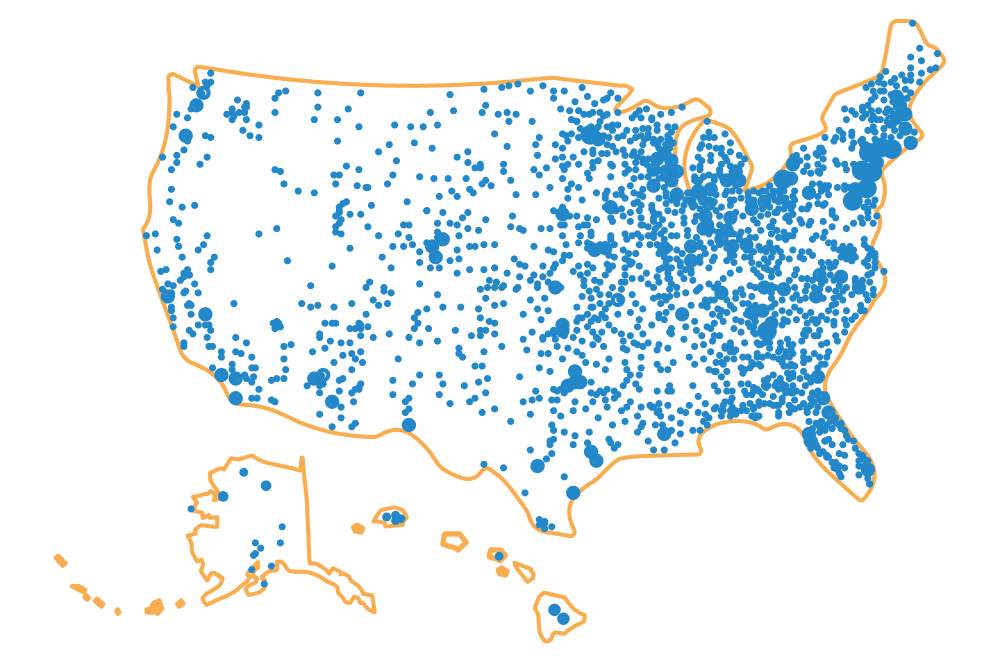One of the most frequently asked questions for Ohio 529 CollegeAdvantage is, “What happens with my 529 if my child receives a full ride?” We certainly hope your child does earn that amazing academic or athletic achievement; however, research shows that the odds are not in their favor.
According to the NSCA College Recruiting (NCSA), only 1% of high school student-athletes receive some form of athletic scholarship at the Division I or II level. Moreover, even less are full-ride scholarships. Most athletic scholarships only cover a portion of higher education expenses to attend the school. Full-ride merit-based academic scholarships are just as rare as athletic ones.
However, there is another strategy to consider when it comes to scholarships: Apply for many smaller ones which could add up to cover a large portion of college, vocational, professional, or higher education costs. In fact, Sallie Mae’s 2024 “How America Pays For College” report shows that 27% of higher education costs are now covered by scholarships and grants.
For the 2025-2026 school year, the start date for the Free Application for Federal Student Aid (FAFSA) is December 1. FAFSA is the application used by the federal government to determine how much financial aid to award students for their education after high school. That monetary support helps students attend accredited four-year colleges and universities, two-year community colleges, vocational schools, certificate programs, and graduate schools. Another reason to fill in FAFSA: Most states, universities, colleges, and private organizations will use FAFSA to determine what financial aid, scholarships, grants, or loans to offer to eligible students.
As the FAFSA deadline is later, you will find out later in the school year what financial aid your child qualifies for. To amplify your savings in with Ohio 529, a smart strategy is applying for scholarships to boost your 529 funds. Remember, scholarships are free money.
Scholarship search
A good place to start your scholarship search is with your high school guidance counselor. They have access to information to help guide your investigation of available scholarships. If your student has been involved in any sports, academic clubs, academic honors, or has done volunteer and community service, check with those organizations for additional scholarship opportunities. Your local library might also have reference material to assist in your student’s search.
There are many free online scholarship search sites like Sallie Mae, FinAid, SmartScholar, and FastWeb to name a few. On these sites, your child will create a profile with their academic scores; community and volunteer service; and athletic, academic or other extracurricular activities. After supplying that information, students will be matched with scholarship applications for which they are eligible. FinAid also created a list of the more unusual available scholarships.
Sallie Mae also offers the Paying For College Resource. The website assembles free tools, videos, and checklists to follow as you all prepare for your children’s higher education. It even shows how to understand your financial aid letters, once you receive them. There’s also a monthly $2,000 scholarship that your child can register for and they don’t even have to write an essay.
U.S. Department of Labor has a free scholarship search tool and also offer guidance on what sources to tap for more information.
Free Ohio scholarship websites to search
The State Of Ohio also wants to help you search for scholarships. Once your child fills in the online form, the site will match them to over 1.5 million scholarships in Ohio’s database.
Additionally, the Ohio Department of Higher Education (ODHE) can connect you to multiple scholarships and grants available throughout the state. As the ODHE website states, some financial aid is decided based on students’ “areas of study (such as teaching, science, engineering, technology, math and medicine), academic merit, financial need, military status, and more.”
For local scholarships, do an online search for any scholarships offered in your area. Some scholarships are specifically given to a local student in someone’s memory with the similar education plans. Local businesses may also offer scholarships for students who want to pursue a specific area of study or a certain vocation or technical skill. Local civic organizations, like Kiwanis and Rotary, offer scholarships. Finally, remember to check if the business where your student works or any organization at which they volunteer offers scholarships.
How to use your 529 with scholarships
While you and your child search for additional scholarships to pay for their higher education, there is good news. If you’ve been saving for your child’s future college costs in a 529 plan, your account is made to work with scholarships. First, make sure that the post-secondary school that has offered your student a scholarship has a federal school code with the U.S. Department of Education. If it does, then your 529 plan will cover qualified expenses there. Here are additional options to use your 529 college savings funds with scholarships.
If the offered scholarship isn’t a full ride, your 529 plan can help pay for other costs. Tuition, room and board (if your student is enrolled at least half time academically), mandatory fees, books, supplies, computers and related equipment and services are 529-qualified higher education expenses. Room and board can also include rent for off-campus residency and non-taxable only groceries, provided these costs are equal or less than the room and board allowances at the accredited education institution. If your child wants to live off campus, check with the school to find out the allowance limit; your child’s off-campus residency and non-taxable food costs cannot exceed it. 529-qualified withdrawals are not subject to federal or state income taxes. As the account owner, make sure to retain all documents of your 529 plan expenses and withdrawals. You have the burden of proof for tax purposes.
Let’s say that the offered scholarship does cover all your student’s higher education expenses, then you can also hold onto the 529 account to use if your child decides to pursue dental, law, medical, or other graduate school options.
You also have the option to transfer the 529 to another beneficiary who is related to your child — including siblings, stepsiblings, parents, stepparents, cousins, grandparents, nieces and nephews — to avoid tax penalties. If you are thinking about continuing your own higher education, you can make yourself the new beneficiary of the college savings account. Also, there are no time limits on when you must use the funds saved in a 529 plan so you can keep saving in it for your grandchildren’s future college costs.
Another alternative is to withdrawal the exact amount of the scholarship from the 529 plan. As a non-qualified withdrawal, the earnings portion of the withdrawal will be subject to federal and state taxes. Usually, a non-qualified withdrawal would also be subject to a 10% federal tax penalty. However, there are three exemptions for 529 plans, with one being for receiving a scholarship.
Everyone’s child has a bright future ahead of them. Scholarships and 529 plans make a great team to help them reach their dreams. Visit Ohio’s 529 Plan online to start saving today for your child’s future education. An investment in a 529 plan is an investment in your child where every dollar saved today is a dollar that doesn’t have to be borrowed later. Learn, plan, and start with Ohio’s 529 Plan today at CollegeAdvantage.
This article was originally posted in 2018 and has been updated and expanded to reflect current information for 2024.


















